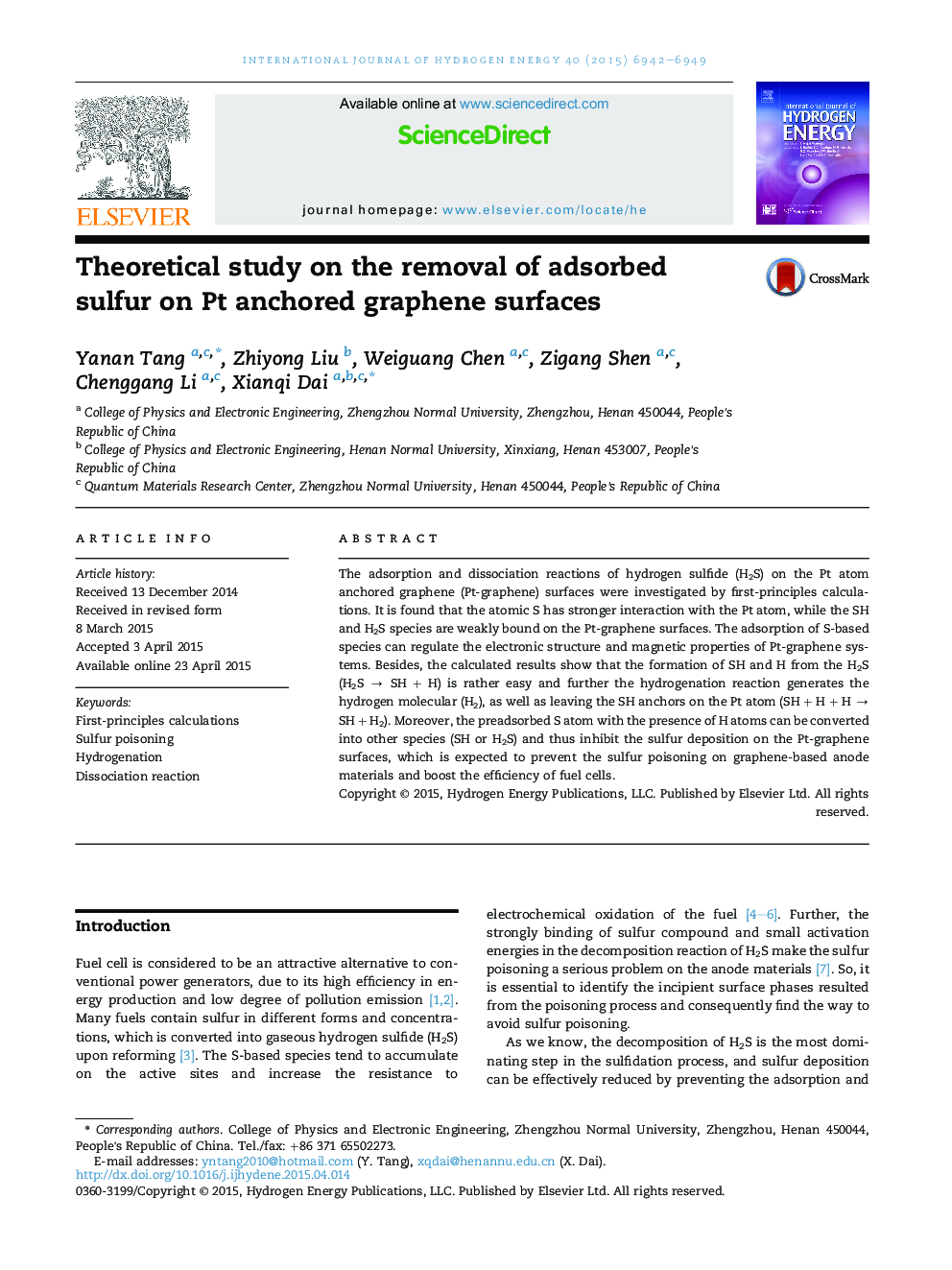| Article ID | Journal | Published Year | Pages | File Type |
|---|---|---|---|---|
| 1271203 | International Journal of Hydrogen Energy | 2015 | 8 Pages |
•The atomic S atom is strongly bound on the Pt-graphene surfaces than that of the SH and H2S.•The adsorbed S, SH and H2S can regulate electronic and magnetic properties of Pt-graphene systems.•The dissociation of H2S or H2 with the preadsorbed SH has relatively large energy barriers.•The deposited S atom with the presence of H atoms can be converted into the SH and H2S.
The adsorption and dissociation reactions of hydrogen sulfide (H2S) on the Pt atom anchored graphene (Pt-graphene) surfaces were investigated by first-principles calculations. It is found that the atomic S has stronger interaction with the Pt atom, while the SH and H2S species are weakly bound on the Pt-graphene surfaces. The adsorption of S-based species can regulate the electronic structure and magnetic properties of Pt-graphene systems. Besides, the calculated results show that the formation of SH and H from the H2S (H2S → SH + H) is rather easy and further the hydrogenation reaction generates the hydrogen molecular (H2), as well as leaving the SH anchors on the Pt atom (SH + H + H → SH + H2). Moreover, the preadsorbed S atom with the presence of H atoms can be converted into other species (SH or H2S) and thus inhibit the sulfur deposition on the Pt-graphene surfaces, which is expected to prevent the sulfur poisoning on graphene-based anode materials and boost the efficiency of fuel cells.
